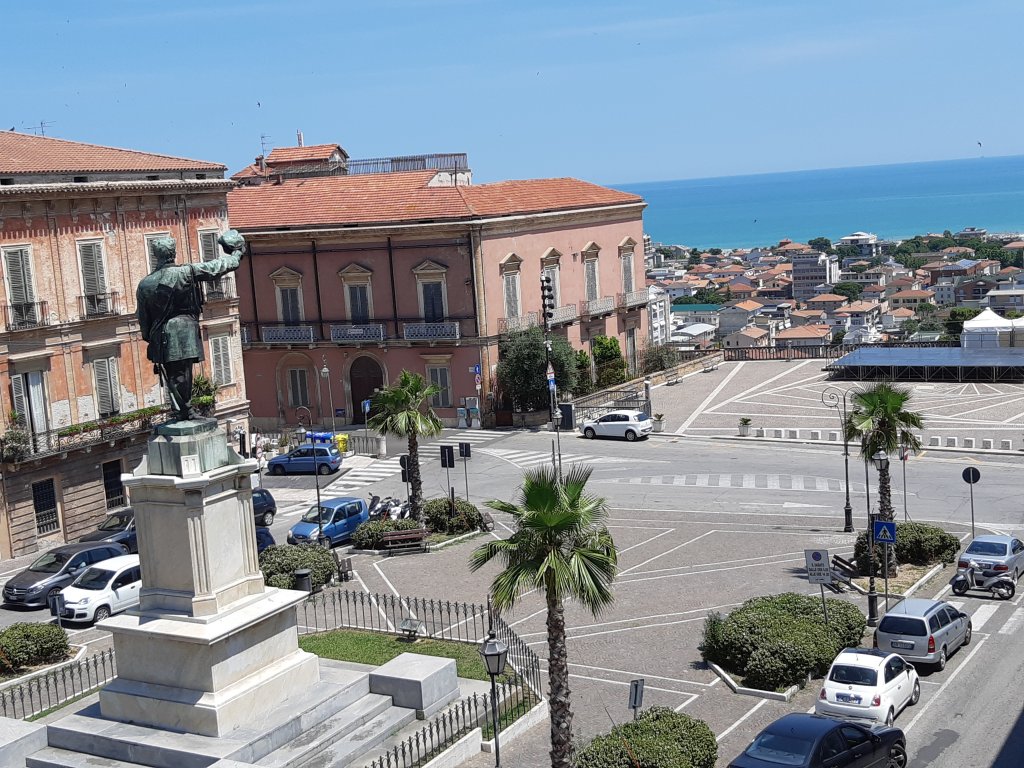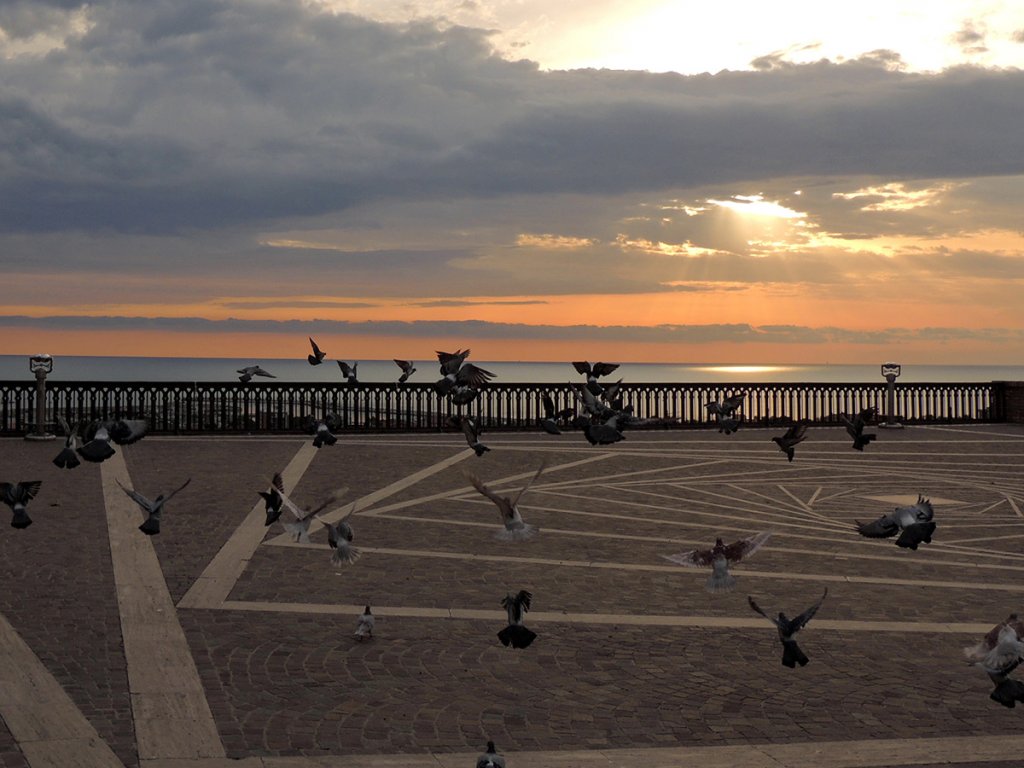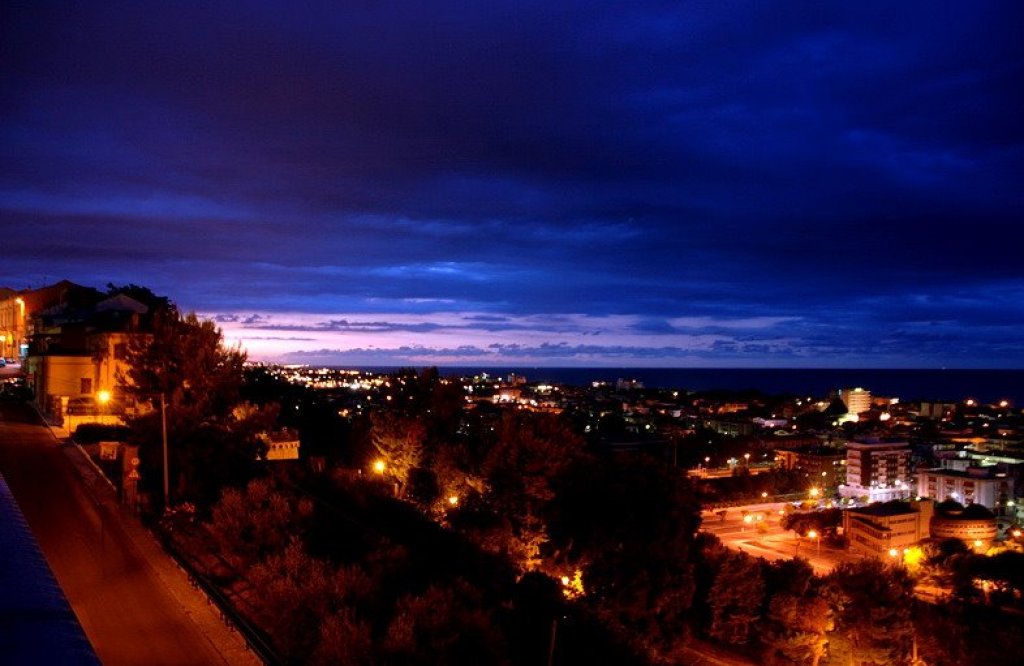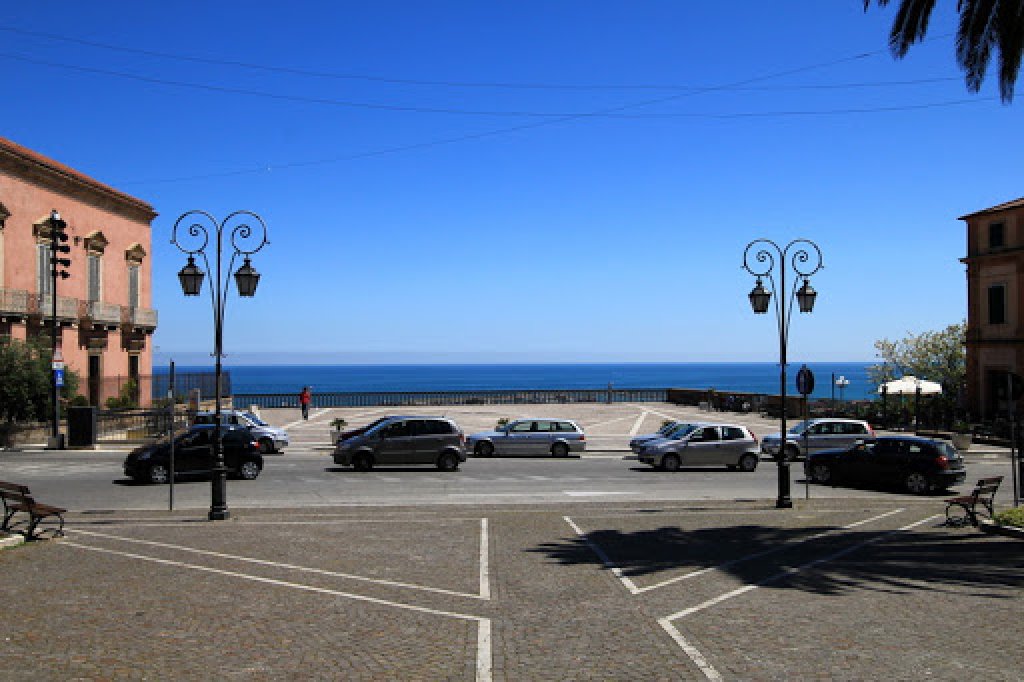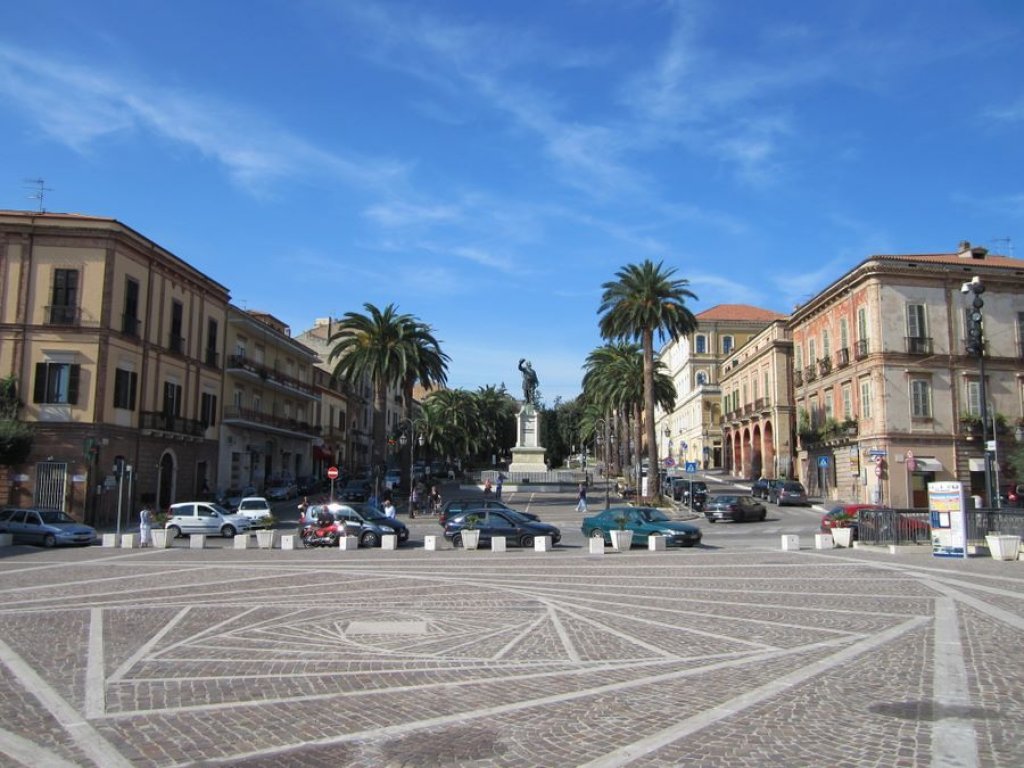- Home
- Punti di interesse
- Giulianova tra Ottocento e Novecento: tra piazza Belvedere e viale Gramsci
Descrizione
La scenografica piazza con i palazzi che vi si affacciano e la sua terrazza sul mare è il manifesto del fervore economico, civile e culturale che investì la città tra Ottocento e Novecento. La creazione del''ampio slargo portò all'abbattimento di un lungo tratto di mura quattro-cinquecentesche.
A dominare lo spazio è il monumento in bronzo a Vittorio Emanuele II, opera di Raffaello Pagliaccetti, realizzato a Firenze nel 1889. Il monumento ricorda il passaggio del re a Giulianova, prima tra tutte le città del Regno di Napoli ad essere visitata durante la sua discesa nell’ottobre del 1860. La piazza ospita due sedi del Polo Museale Civico: la Sala Civica di Scultura con alcune opere che raccontano la vita artistica di Raffaello Pagliaccetti e la Cappella di San Gaetano che lo scultore progettò per la famiglia De Bartolomei, al cui interno si trovano alcuni monumenti in marmo dello scultore giuliese, tra i più affermati esponenti dell'Ottocento fiorentino e italiano.
Da piazza Belvedere si imbocca via Gramsci, già via del Sole, con i suoi palazzi otto-novecenteschi. Tra gli edifici spicca la Villa dei baroni Ciafardoni del 1885 con il suo grande giardino.
Subito dopo è possibile passeggiare nell'ampio parco di Casa Maria Immacolata, già convento francescano, poi stabilimento produttivo e oggi residenza estiva diocesana. All'interno del parco ci si imbatte nei locali sotterrani di una cisterna romana.
--------------------- ENG ---------------
Description
The beautyful square bordered by palaces and its terrace overlooking the sea is a witness to the economic, civil and cultural fervor that swept through the city between the 19th and 20th centuries. The realization of the large square led to the demolition of a long section of the 15th and 16th century walls.
The square is dominated by the bronze monument Vittorio Emanuele II, a work by Raffaello Pagliaccetti, made in Florence in 1889. The monument commemorates the King's entry into Giulianova, one of the first cities of the Kingdom of Naples to be visited during his descent in October 1860. In the square there are two buildings that are part of the museum: the Civic Hall of Sculptures, with some works that tell the story of Raffaello Pagliaccetti's artistic life, and the Chapel of San Gaetano, designed by the sculptor for the De Bartolomei family. In the chapel there are some marble monuments by the sculptor from Giulianova, one of the most successful artists of the 19th century in Florence and Italy.
From Piazza Belvedere you come to Via Gramsci, formerly Via del Sole, with its buildings from the 19th and 20th centuries. Among the buildings, the villa of the Barons Ciafardoni stands out, dating back to 1885 with its huge garden.
Immediately afterwards, the big park of the "Casa Maria Immacolata", formerly a Franciscan monastery, then a production site and today the summer seat of the diocese, invites you to stroll. Inside the park you will come across the underground rooms of a Roman cistern.
--------------------- DE ---------------
Beschreibung
Der malerische Platz, von Palästen eingesäumt, und seine Terrasse mit Blick auf das Meer ist das Zeitzeugnis des wirtschaftlichen, zivilen und kulturellen Eifers, der zwischen dem 19. und 20. Jahrhundert durch die Stadt fegte. Die Realisierung des großen Platzes, führte zum Abriss eines langen Abschnitts der Mauern aus dem 15. und 16. Jahrhundert.
Der Platz wird vom Bronzedenkmal Vittorio Emanuele II, ein Werk von Raffaello Pagliaccetti, das 1889 in Florenz entstand, dominiert. Das Denkmal erinnert an den Einzug des Königs in Giulianova, eine der ersten Städte des Königreichs Neapel, die während seines Abstiegs im Oktober 1860 besucht wurde. Auf dem Platz gibt es zwei Gebäude die Teil des Museums sind: der Bürgersaal der Skulpturen mit einigen Werken, die die Geschichte von Raffaello Pagliaccettis künstlerischem Leben erzählen, und die Kapelle San Gaetano, die der Bildhauer für die Familie De Bartolomei entworfen hat. In der Kapelle sind einige Marmordenkmäler des Bildhauers aus Giulianova, einem der erfolgreichsten Artisten im 19. Jahrhundert in Florenz und Italien.
Von der Piazza Belvedere kommen Sie in die Via Gramsci, früher Via del Sole, mit ihren Gebäuden aus dem 19. und 20. Jahrhundert. Unter den Gebäuden sticht die Villa der Barone Ciafardoni aus dem Jahr 1885 mit ihrem großen Garten hervor.
Unmittelbar danach lädt der große Park der „Casa Maria Immacolata“, ehemals Franziskanerkloster, dann Produktionsstätte und heute Sommersitz der Diozöse, zum Flanieren ein. Im Inneren des Parks stoßen Sie auf die unterirdischen Räume einer römischen Zisterne.

